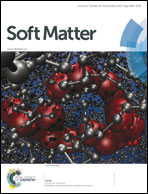Particle selection through topographic templates in nematic colloids
Abstract
Liquid crystal colloids have been proposed as suitable candidates for responsive photonic crystals. Large scale growth of such colloidal systems is, however, a challenge and recently template-assisted assembly has been proposed to guide the growth of colloidal crystals, with controlled symmetries, in nematic liquid crystals. Known for their long-range anisotropic interactions, these colloidal systems are stabilized typically at the center of the cells due to strong particle–wall repulsion from the confining substrates. This behaviour is dramatically changed in the presence of topographic patterning. Here we propose the use of topographic modulation of surfaces to select and localize particles in nematic colloids. By considering convex and concave deformations of one of the confining surfaces we show that the colloid–flat surface repulsion may be enhanced or switched into an attraction. In particular, we find that when the colloidal particles have the same anchoring conditions as the patterned surfaces, they are strongly attracted to concave dimples, while if they exhibit different anchoring conditions they are pinned at the top of convex protrusions. Although dominated by elastic interactions the first mechanism is reminiscent of the depletion induced attraction or of the key–lock mechanism, while the second is specific to liquid crystal colloids. These long-ranged, highly tunable, surface–colloid interactions contribute to the development of template-assisted assembly of large colloidal crystals, with well defined symmetries, as required for applications.


 Please wait while we load your content...
Please wait while we load your content...